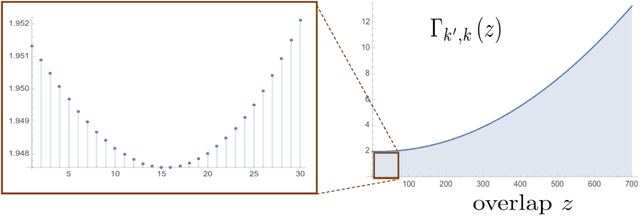The Landscape of the Planted Clique Problem: Dense subgraphs and the Overlap Gap Property
Paper and Code
Apr 15, 2019


In this paper we study the computational-statistical gap of the planted clique problem, where a clique of size $k$ is planted in an Erdos Renyi graph $G(n,\frac{1}{2})$ resulting in a graph $G\left(n,\frac{1}{2},k\right)$. The goal is to recover the planted clique vertices by observing $G\left(n,\frac{1}{2},k\right)$ . It is known that the clique can be recovered as long as $k \geq \left(2+\epsilon\right)\log n $ for any $\epsilon>0$, but no polynomial-time algorithm is known for this task unless $k=\Omega\left(\sqrt{n} \right)$. Following a statistical-physics inspired point of view as an attempt to understand this computational-statistical gap, we study the landscape of the "sufficiently dense" subgraphs of $G$ and their overlap with the planted clique. Using the first moment method, we study the densest subgraph problems for subgraphs with fixed, but arbitrary, overlap size with the planted clique, and provide evidence of a phase transition for the presence of Overlap Gap Property (OGP) at $k=\Theta\left(\sqrt{n}\right)$. OGP is a concept introduced originally in spin glass theory and known to suggest algorithmic hardness when it appears. We establish the presence of OGP when $k$ is a small positive power of $n$ by using a conditional second moment method. As our main technical tool, we establish the first, to the best of our knowledge, concentration results for the $K$-densest subgraph problem for the Erdos-Renyi model $G\left(n,\frac{1}{2}\right)$ when $K=n^{0.5-\epsilon}$ for arbitrary $\epsilon>0$. Finally, to study the OGP we employ a certain form of overparametrization, which is conceptually aligned with a large body of recent work in learning theory and optimization.
 Add to Chrome
Add to Chrome Add to Firefox
Add to Firefox Add to Edge
Add to Edge